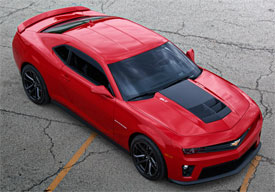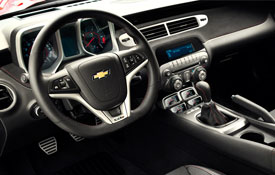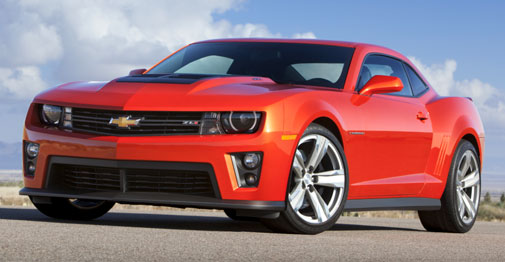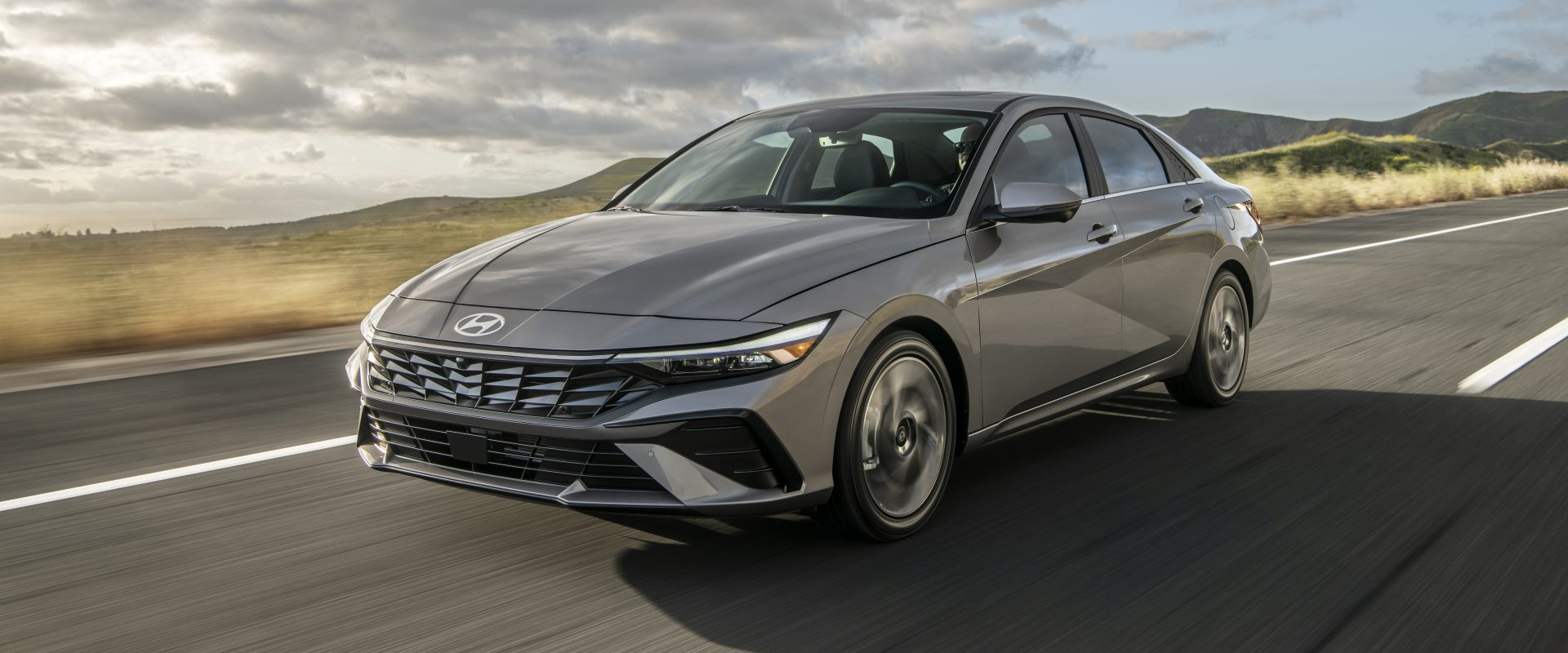2012 Chevrolet Camaro ZL1
Since the Chevrolet Camaro’s rebirth in 2010, sales have taken off right to the top of the pony car field, even outselling its main rival, the Ford Mustang. Yes, it does feel like 1969 all over again, as the pony car wars are continuing to heat up. Indeed the latest shot comes from the general is a 580-horsepower missile going by a familiar name… ZL1.
The 1969 Chevrolet Camaro ZL1 was a born to race, special edition, one year only Camaro, limited to just 69 units. The 2012 Chevrolet Camaro ZL1 has a few similarities to the ’69, but a lot more differences.
For starters, there’s no big-block under the hood, instead it’s GM’s LSA 6.2-liter V8. That’s the same supercharged pushrod pumper found in the Cadillac CTS-V. Improved air flow for both intake and exhaust, as well as updates to the supercharger and intercooler, boost horsepower to 580 and torque to 556 pound feet.
 Another big difference from the original ZL1 that was designed strictly for drag racing, this new ZL1 feels at home on any type of track. As with just about every GM performance car to come along in the last decade, it was designed on Germany’s Nurburgring. While we didn’t sample it there, we did our laps at the closest thing we have in this country, VIR. Virginia International Raceway is a track with lots of high speeds, off camber turns, and elevation changes. It’s not for the faint of heart. And neither is the ZL1. Starting with a Camaro SS, the ZL1 adds stiffer suspension bushings all around, a redesigned rear stabilizer bar, and most importantly, a new version of GM’s Magnetic Ride control.
Another big difference from the original ZL1 that was designed strictly for drag racing, this new ZL1 feels at home on any type of track. As with just about every GM performance car to come along in the last decade, it was designed on Germany’s Nurburgring. While we didn’t sample it there, we did our laps at the closest thing we have in this country, VIR. Virginia International Raceway is a track with lots of high speeds, off camber turns, and elevation changes. It’s not for the faint of heart. And neither is the ZL1. Starting with a Camaro SS, the ZL1 adds stiffer suspension bushings all around, a redesigned rear stabilizer bar, and most importantly, a new version of GM’s Magnetic Ride control.
And the result is… while it still feels a little on the heavy side, this car handles way better than you’re expecting. A new electric power steering unit feels neutral and is very responsive; the Performance Traction Management has five settings to suit track conditions or your driving experience. The Brembo brakes are by far the best we’ve ever experienced on a Camaro; it was hard to get our heads around using them as hard as we were. We didn’t get nearly enough laps to truly find their limits.
On the street, the ride is far from harsh, seating is comfortable, and the ZL1 is fairly well-mannered. 30% of the ZL1’s parts are unique, but most of them you can’t see, like aerodynamic enhancements under the body, a new rear differential that shares the transmission coolant, and additional pick-ups in the fuel tank.
Exterior enhancements are much easier noticed, and include a big front splitter, a new grille that feeds large brake cooling ducts and a carbon fiber hood with vents that not only get air out of the engine bay but provide additional front end down force as well. There are also extended rockers and fenders, and of course a rear spoiler. 20-inch wheels are standard and wrapped in Good Year Eagle F1’s, 285/35’s up front, 305/35’s in the rear.
 Inside, the ZL1 gets a mild make-over with suede leather replacing the plastic trim on the dash and doors. The improved seats also get the suede treatment, and an optional Suede Package spreads hide onto the steering wheel and shifter as well. It’s also loaded. Bluetooth, back-up cam, and even Head-up Display, are all standard. You have your choice of 6-speed transmissions, manual or automatic; and just as in the CTS-V, the automatic is actually quicker to 60 by a tenth at 3.9-seconds. Top speed…180!
Inside, the ZL1 gets a mild make-over with suede leather replacing the plastic trim on the dash and doors. The improved seats also get the suede treatment, and an optional Suede Package spreads hide onto the steering wheel and shifter as well. It’s also loaded. Bluetooth, back-up cam, and even Head-up Display, are all standard. You have your choice of 6-speed transmissions, manual or automatic; and just as in the CTS-V, the automatic is actually quicker to 60 by a tenth at 3.9-seconds. Top speed…180!
But, the manual achieves better Government Fuel Economy Ratings at 14-City and 19-Highway, while the automatic manages just 12 and 18. Those low numbers do warrant a Gas Guzzler Tax; still, much like the Chevrolet Corvette, the Camaro ZL1 delivers world class performance, without an exotic price tag, starting at just $54,995, with very few options available.
The 2012 Chevrolet Camaro ZL1 is a truly contemporary muscle car. More than just a flimsy pony car made for the drag strip, it’s a high performance missile that can streak around any corner. And, it has clearly shot the Camaro to the top of the pony car field for now. With a 650-horsepower Shelby GT 500 Mustang on the way, will the ZL1 stay there for long? Well we can’t wait to find out. Welcome back to the 60’s - peace, love, and muscle cars, baby!
Specifications
- Engine: 6.2-liter V8
- Horsepower: 580
- Torque: 556 lb-ft.
- 0-60 mph: 3.9 seconds
- EPA: 14 mpg city/ 19 mpg highway (manual)
2024 Hyundai Elantra
Basic Transportation At Its Best…And That Is A Compliment
For those of you who write in every week bemoaning the fact that all we seem to do around here is test incredibly expensive cars and EVs that only the very well to do can afford, this one’s for you. It’s a commuter and budget friendly mainstay from Hyundai, the compact Elantra sedan. And, it has been nicely updated for 2024.
We clearly do enjoy driving high-performance machines and ultra-luxury rides around here, but like most of you, when it comes time to drive home at the end of a long workday, we do so in something much more practical and affordable, like this 2024 Hyundai Elantra sedan.
If you’re thinking the front end has gotten more aggressive, you’re right. Hyundai calls it a “Shark Nose” theme, and we’re guessing they were thinking more Great White than Hammerhead, though Megamouth shark would also apply. It helps for a low and wide look; more substantial than the typical compact. Other additions for ’24 include slimmer daytime running lights, revised stainless steel Hyundai emblem, reshaped front fenders, sport sedan-style rear diffuser with silver trim; a parametric pattern added to the C-Pillar, and new LED taillights that take up a lot more space on the highly sculpted decklid. Plus, new wheel designs in sizes ranging from 15- to 18-inches.
Standard engine in SE, SEL, and Limited grades is this naturally aspirated 2.0-liter I4 with 147 horsepower and 132 lb-ft of torque. Even with no hybrid assistance, it gets substantial Government Fuel Economy Ratings of 31 City, 40 Highway, and 34 Combined; we averaged a great 38.6 mpg of Regular.
Those high fuel economy numbers mean acceleration times are pretty high as well. It was in no particular hurry to get off the line at our test track, as after a slight jolt of power, it felt pretty sluggish going down the track, taking us a lengthy 9.4 seconds to hit 60 mph. Hyundai’s Intelligent Variable Transmission has some realistic simulated gear shifts built in, and they not only provided the feel of a true automatic, but kept engine noise from becoming overbearing. And while this 2.0-liter may not be a house-on-fire off the line, it has no problem keeping up with traffic, and feels like just the perfect amount of power for a practical and safe commuter car.
There are other engine options too. Two choices if you want to go faster, a 1.6-liter turbo with 201 horsepower in the Elantra N Line, and a 276-horsepower turbocharged 2.0-liter for the Elantra N; plus, one with even better fuel economy, a 1.6-liter hybrid with a 139 horsepower total output.
And despite some significant understeer, there was good feel through the cones of our handling course, both in steering and chassis feedback. We wouldn’t quite call it “point and shoot,” but it responded to inputs fairly quickly, with only moderate body roll. All-in-all, when it comes to performance, it doesn’t claim to bring a whole lot to the table, but does clearly overachieve with what it does bring.
And Hyundai is always overachieving when it comes to packing in features, yet has found a way of keeping things refreshingly simple with a good mix of touchscreen and manual controls. Lots of space too, both up front in the surprisingly wide front buckets, and in the rear bench with ample room for three. Updates for all Elantra interiors include softer materials on the door panels, upgraded instrumentation and additional charging ports, plus a surround view monitor and new H-Tex simulated leather for Limited trim.
Elantra pricing starts with an SE at $22,775, the SEL comes in at $24,725, Limited begins at $28,215, and the sporty N Line starts at $29,615. If you’re interested in the hybrid, base Blue starts at $27,400 with Limited at $30,600.
Some might say there’s not a whole lot that’s earth shaking about the 2024 Hyundai Elantra, but that’s mostly why we like it so much. When it comes to just delivering good, basic transportation with a high dose of unexpected amenities, Hyundai delivers once again.
Specifications
- Engine: 2.0-liter I4
- Horsepower: 147
- 0-60 mph: 9.4 seconds
- 60-0 Braking: 111 ft (avg)
- MW Fuel Economy: 38.6 MPG (Regular)
- Transmission: IVT
- Torque: 132 lb-ft
- 1/4 Mile: N/A (Track Maintenance)
- EPA: 31 City / 40 Highway / 34 Combined







